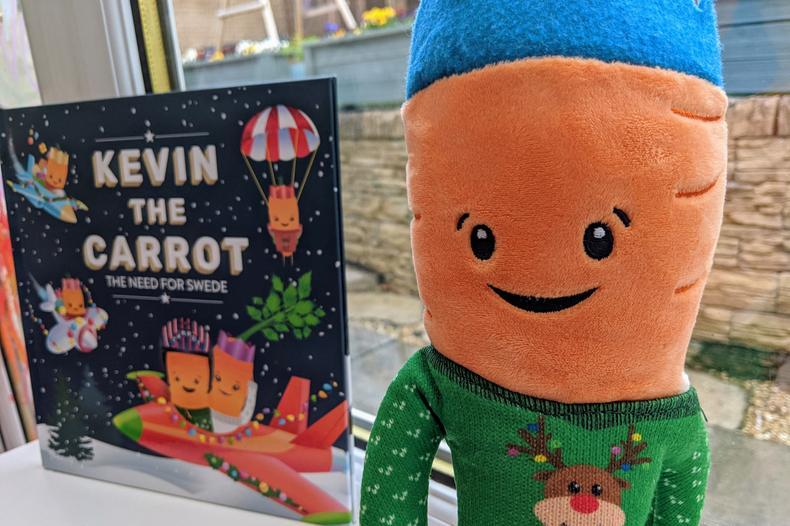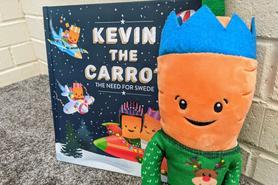Get creative with your trade marks
How does a creative trade mark strategy help a brand to build a stronger relationship with the consumer?

From Kevin the Carrot and Always #LikeAGirl to the meerkats from Compare the Market – we look at how brands have successfully build recognition and loyalty through innovative use of trade marks.
Source identifier no longer enough
Intellectual property is all about protecting innovation. As businesses create new and innovative goods and services, trade mark strategies must equally evolve and develop.
It is arguably no longer enough to carefully explain to consumers “We are X and we sell Y”. Many businesses are now investing heavily in trade marks and marketing strategies in order to build an engaged consumer following.
The key aspect of any creative trade mark strategy is consumer engagement.
Engaged consumers

In some ways, an engaged consumer following can be bought in the form of ‘purchased likes’ on social media and commercial arrangements with ‘influencers’.
However, in the present culture of ‘screen scrolling’, it is not straightforward to engage customers in a meaningful or sustained way.
Businesses are increasingly relying on more creative trade mark strategies to foster, maintain and commercialise the relationships with their consumers.
Creative trade mark strategies
Saying something is ‘creative’ is simply another way of saying it is ‘different to the norm’. Businesses want and need to stand out from their competitors to survive.
With increased choice in every commercial market and delivery services eroding the importance of geographical proximity to the customer base, it has never been more popular, or important, to be ‘different’.
A creative trade mark strategy will often capitalise on the communication functions of trade marks, going beyond the core source identifier function.
Using trade marks to demonstrate an alignment of values or capturing the consumer’s imagination are creative ways to foster loyalty and build a strong relationship with customers.
Storytelling – Kevin The Carrot

Every year since 2016, a different story involving Aldi’s “Kevin the Carrot” is made into a TV advert mini-series.
In 2020, the story told of Kevin’s journey home over a number of weeks. The evolving nature of the story encourages people to follow and engage with Kevin.
#KevinTheCarrot trends on social media and related merchandise of Kevin and his friends is available.
Aldi has a UK registered trade mark for KEVIN THE CARROT. The marketing and trade mark strategy is subtle, with a full table of Christmas produce shown only at the end of the advert.
Where Aldi’s focus at other times of the year appears to be principally on price comparisons, Kevin is about the wholesome story. Consumers engage with the sub-brand and this goodwill percolates upwards into Aldi’s main trade mark, adding value to the ALDI brand.
Social responsibility – Always #LikeAGirl

The feminine care brand ran a powerful advert about what it means to ‘run like a girl’, ‘punch like a girl’, ‘throw like a girl’ and so on.
It is about turning an insult into a confidence movement. The consumer base of Procter & Gamble’s Always brand is dominated by women.
The messaging is empowering. It encourages girls and women to be confident, challenge inequality, continue playing sport and engage in other activities which promote physical and mental wellbeing.
The messaging is not focused on the functionality of the products but on the strength of women. The subject matter is interesting to the target consumer, encouraging them to pay a higher degree of attention to the ad campaign.
Unsurprisingly, Procter & Gamble has a UK trade mark registration for #LIKEAGIRL in relation to feminine hygiene products and advertising. This unique and creative trade mark is engaging and motivational, not words typically associated with hygiene products.
Characters – Compare the Meerkats

Dealing with personal insurance products is not a task which most people look forward to. Since 2009, we have had Aleksandr Orlov and Sergei to help.
In a trade mark sense, COMPARE THE MARKET is arguably the sub-brand to MEERKAT now.
With MEERKAT, as well as MEERKAT STUDIOS, MEERKAT REWARDS, MEERKAT MUSIC, MEERKAT MOVIES and MEERKAT MEALS all protected as registered trade marks in the UK, the MEERKAT brand is now perhaps regarded by the average consumer as the dominant trade mark.
Compare the Market Limited appears to embrace this. It has a range of merchandise and dedicated web pages for customers to ‘Meet the meerkats’.
The fun and slightly ridiculous characters are cute and unobtrusive.
However, when a consumer is reminded, by whatever means, of the need to renew car insurance, the memorable meerkats allow the price comparison website to benefit from the consumers’ affection for these fluffy characters.
Conclusion
Creative trade mark strategies will often have one surprising thing in common: they do not push or obviously promote the trade marks.
The messaging in creative strategies is one of communication or an emotional journey. When these messages are communicated effectively, goodwill is generated by the consumer connecting or aligning their own and the company’s values.
Success of a sub-brand also facilitates the growth of goodwill in the company’s core trade marks, establishing and securing the consumers’ relationship with that brand. Simples!

